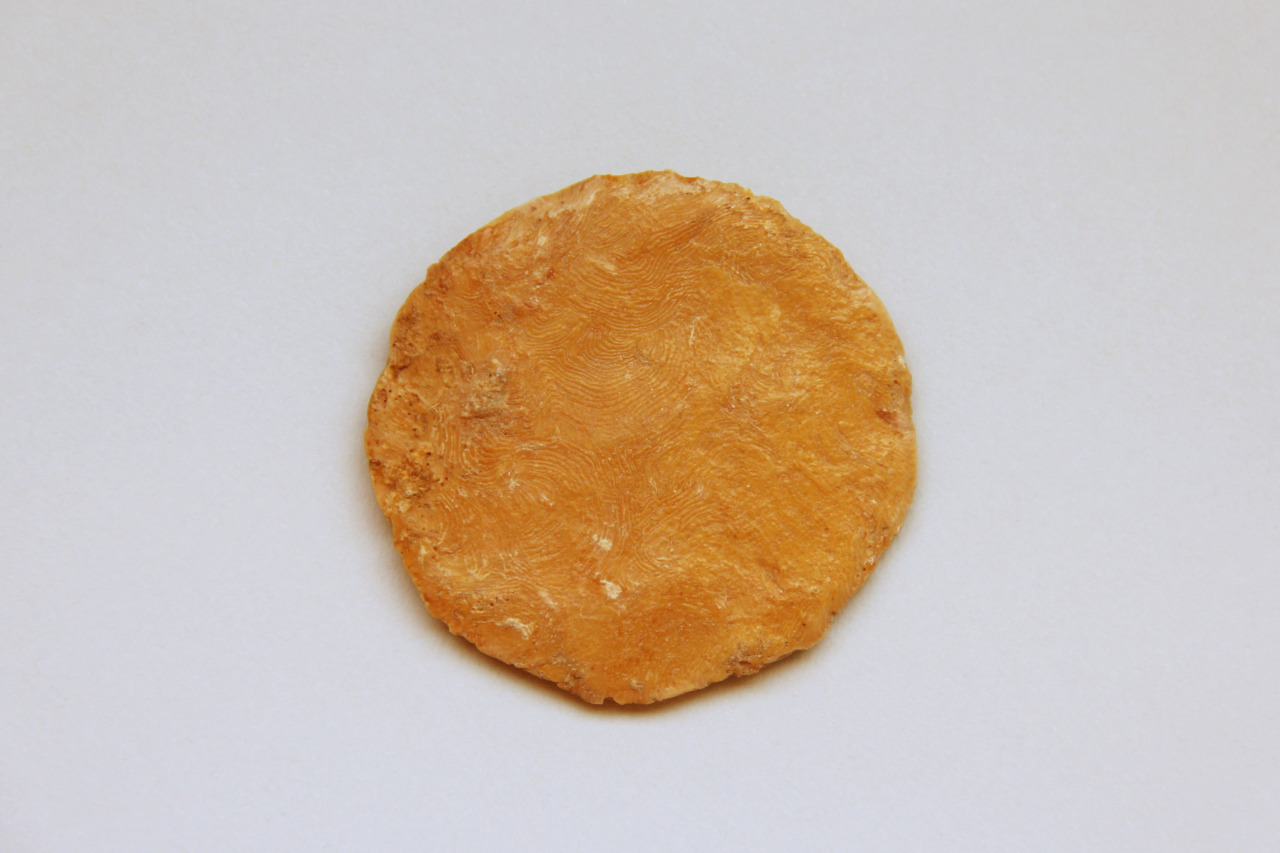“Resembling a medallion made of clay covered with “fingerprints”, this fossil called Nummulite, is an example of a fossil giant foraminiferan or foram (a type of amoeba). The “fingerprints” that one sees on this specimen are actually the numerous coils that make up the skeleton or shell of a relatively large single-celled organism. Most forams are microscopic organisms that are no bigger than a pinhead, but Nummulite was a button-sized giant that could be seen with the naked eye. The size and shape of these fossil organisms earned them their scientific name which is derived from the Latin word for ‘little coin’, nummulus. It is no surprise that ancient Egyptians, who were using the rock that contain these fossils to build their Great Pyramids, treated these fossils as a form of currency. These fossils are also equally as valuable to geologists and paleontologists who use them as key index fossils, as certain species of Nummulite are found only in rock layers of a specific known geologic age.“
Hanson Wong, Tour guide at the Pacific Museum of the Earth.
